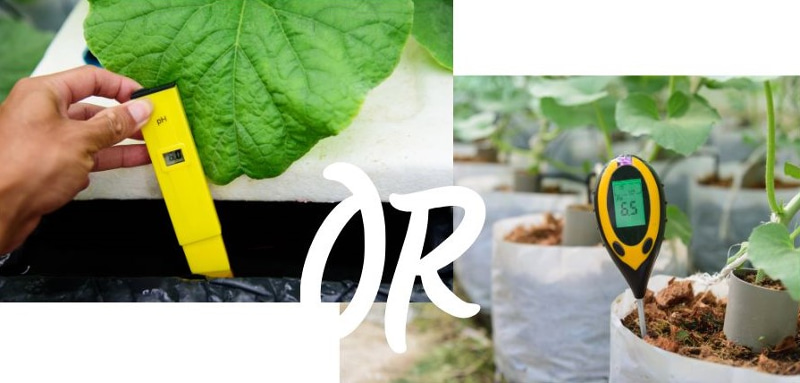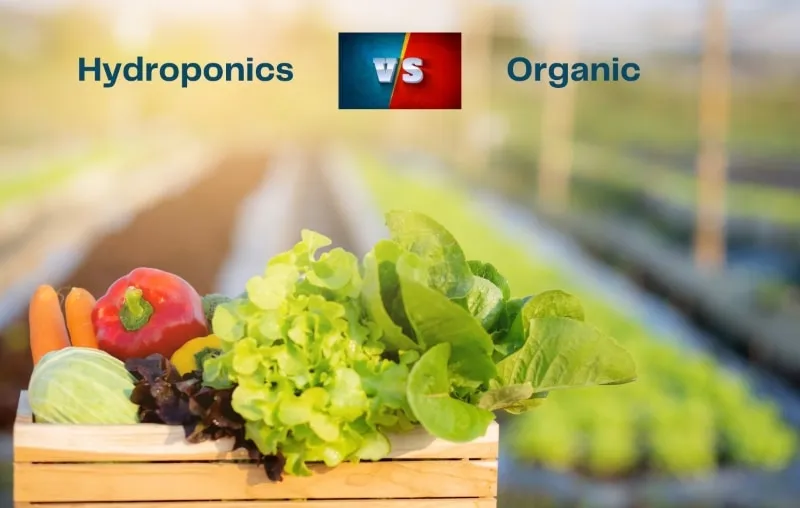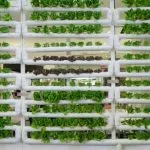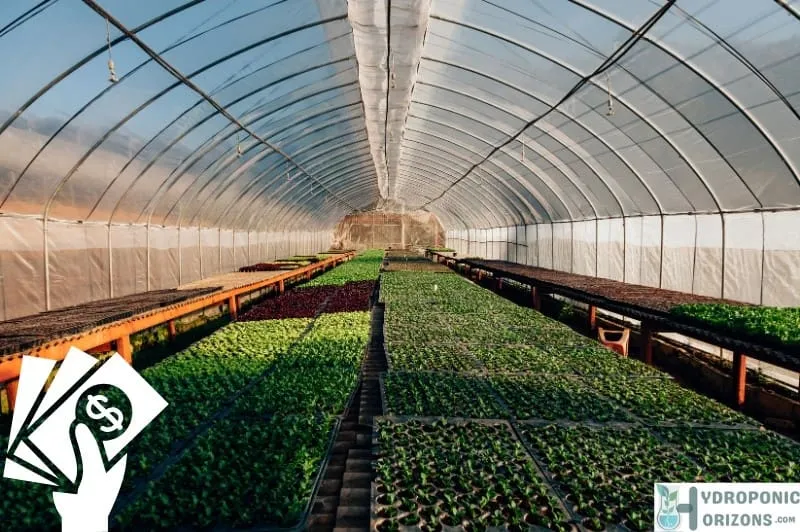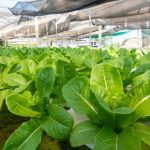Hydroponic gardening offers numerous advantages, including the ability to cultivate plants year-round, irrespective of the weather conditions outside. One crucial element of successfully setting up a hydroponic garden is optimizing the spacing between your plants. By understanding and implementing the correct spacing techniques, you can ensure that your plants have enough room to grow and thrive without overcrowding, resulting in a healthier and more productive garden.
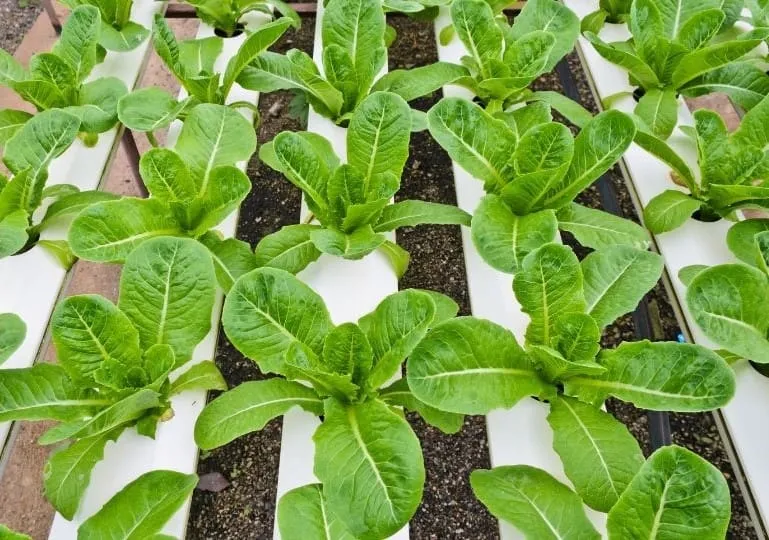
To establish the proper hydroponic plant spacing, you need to consider the type and size of the plants you’re growing, as well as their root development requirements. In soil-based gardening, plants need ample space for their roots to seek out nutrients, while in hydroponics, mineral nutrients are provided directly through the flow of water. That said, the plants need room for root expansion and air circulation. For instance, lettuce and most leafy greens require between 6 and 8 inches of space when you plan to harvest them all at once, but 4 inches is sufficient if you want to continuously harvest the plants.
Vertical hydroponic towers and other designs may call for particular spacing configurations. In such cases, it’s essential to stagger the holes on each side, ensuring that the pots do not touch and plants have adequate room to grow, as advised by Oklahoma State University. By paying attention to these spacing details, your hydroponic garden will be on the path to success, providing you with an abundance of fresh and healthy produce.
Basics of Hydroponic Plant Spacing
Importance of Plant Spacing
In hydroponic gardening, plant spacing is crucial for several reasons. Adequate spacing ensures that plant roots have sufficient room to develop and access nutrients. Since plants in a hydroponic system don’t rely on soil for stability, oxygen, or water retention, proper spacing becomes even more important. By giving plants enough space, you allow them to efficiently absorb nutrients and dissolved oxygen from the water, which facilitates healthier growth
Moreover, appropriate plant spacing allows for better light penetration, reducing the competition for light among plants. This is especially important in outdoor gardens when hours of light are reduced in winter. This results in higher yield and improved growth overall.
Determining Optimal Plant Spacing
Optimal spacing for hydroponic plants varies depending on the type of plant and the specific hydroponic system in use. For instance, heads of lettuce and most leafy greens require between 6 and 8 inches (15-20 cm) of space if you plan to harvest them all at once. If you want to harvest them continuously, it is possible to grow them with only 4 inches (10 cm) of space between plants.
When determining optimal plant spacing, you should consider the following factors:
- The size and growth habits of your plants
- The hydroponic system you are using
- The need for light penetration and air circulation
You may also consider implementing vertical or A-frame hydroponic systems, which are space-efficient options that do not require as much horizontal room between plants.
By considering these factors and following guidelines specific to the plants and system you choose, you can optimize your plant spacing to provide the best growing conditions for your hydroponic garden.
How Much Space Is Needed For Hydroponics?
Hydroponic Plant Spacing Chart for Popular Hydroponic Plants
When planning your hydroponic garden, it’s essential to consider the spacing of each type of plant to ensure healthy growth and high yields. Below is a general chart for hydroponics distance between plants:
| Plant | Spacing Between Plants | Spacing Between Rows |
|---|---|---|
| Lettuce | 4-8 inches (10-20 cm) | 8-12 inches (20-30 cm) |
| Kale | 8-12 inches (20-30 cm) | 12-18 inches (30-45 cm) |
| Spinach | 4-6 inches (10-15 cm) | 8-10 inches (20-25 cm) |
| Tomatoes | 14-20 inches (35-50 cm) | 24-36 inches (60-90 cm) |
| Peppers | 10-18 inches (25-45 cm) | 18-24 inches (45-60 cm) |
| Greens (assorted) | 6-12 inches (15-30 cm) | 10-14 inches (25-35 cm) |
| Herbs (assorted) | 6-10 inches (15-25 cm) | 8-12 inches (20-30 cm) |
| Swiss Chard | 8-12 inches (20-30 cm) | 12-18 inches (30-45 cm) |
| Strawberries | 8-10 inches (20-25 cm) | 12-18 inches (30-45 cm) |
Please note that these spacings are general guidelines and can vary depending on the specific variety, your hydroponic system setup, and other factors. Always read the seed packet or consult with an expert if you are unsure about the best spacing for your particular plants.
Lettuce, Spinach and Leafy Greens
Lettuce and most leafy greens require less space compared to other plants. Generally, lettuce plants need between 6-8 inches (15-20 cm) of space if you’re going to harvest them all at once. If you plan to harvest them continuously, however, you can grow them with only 4 inches (10 cm) of space between plants.
Spinach also requires minimal space, with a suggested spacing of 4-6 inches (10-15 cm) between each plant. This allows your spinach plants to grow comfortably and access ample light and nutrients. Other leafy greens, like kale and swiss chard, can be spaced out 8-12 inches (20-30 cm) apart to accommodate their larger size.
Tomatoes and Peppers
Tomatoes and peppers are larger plants that require more space for healthy growth. Tomatoes should be spaced about 14-20 inches (35-50 cm) apart, with rows about 24-36 inches (60-90 cm) apart. Peppers need slightly less space, with 10-18 inches (25-45 cm) between plants and 18-24 inches (45-60 cm) between rows. Giving tomatoes and peppers adequate space ensures proper airflow, reduces the chance of disease, and allows the plants to receive sufficient light.

Herbs and Strawberries
Herbs, like basil, parsley, cilantro, and mint, are well-suited for hydroponic systems and require a moderate amount of space. Space the plants about 6-10 inches (15-25 cm) apart and allow 8-12 inches (20-30 cm) between rows. This will ensure your herb plants have enough room to grow and flourish.
Finally, strawberries are a popular choice for hydroponic growers. To grow healthy, high-yielding strawberry plants, space them approximately 8-10 inches (20-25 cm) apart, with 12-18 inches (30-45 cm) between rows. This spacing provides an optimal environment for the plants to grow and produce berries.
Choosing the Right Hydroponic System
When setting up your hydroponic garden, selecting the appropriate system is crucial to ensure optimal plant spacing, growth, and overall success. This section will help you explore various hydroponic systems and their characteristics.
Deep Water Culture
Water culture systems are an excellent choice for beginners, as they are easy to set up and cost-effective. In this system, your plants are suspended in a nutrient-rich solution, with their roots submerged in water. The air pump is essential to provide oxygen for the roots. This setup works well for fast-growing, shallow-rooted plants like lettuce and spinach. When considering plant spacing in hydroponic water culture systems, think of a minimum of 18 inches apart and a maximum of 30 inches for plants less than three feet tall.
Wick System
Wick systems are passive hydroponic systems in which a fabric wick connects the growing medium with the nutrient solution. It’s a low-maintenance and cost-effective system, particularly suitable for small space gardening or indoors. Ideal for leafy greens and herbs, wick systems require similar plant spacing as water culture systems. Be sure to choose a growing medium with excellent water-retention properties, like coco coir or vermiculite, to maintain healthy seedlings.
Nutrient Film Technique
The Nutrient Film Technique (NFT) is a hydroponic system where nutrient solution is passed over the roots of plants that grow on a sloping surface. It’s an efficient way to grow shallow-rooted, fast-growing plants like leafy greens and strawberries, requiring precise water and nutrient management. In NFT systems, plant spacing should ensure enough room for roots to spread without overcrowding, approximately 8 to 12 inches apart.
Ebb and Flow System
Ebb and Flow systems flood the growing medium with the nutrient solution at regular intervals and then drain it back into the reservoir. These systems are versatile and work well with a variety of plants and growing media, such as gravel, sand, or Hydroton clay pebbles. Plant spacing in Ebb and Flow systems varies depending on the size and type of plant but generally follows similar guidelines as water culture and wick systems.
Aeroponic System
Aeroponic systems mist nutrient solution directly onto the roots of plants, hanging in the air within an enclosed chamber. This high-performance system is best for skilled gardeners with experience in hydroponics, as it requires a more precisely controlled environment. Due to high costs, aeroponic systems are usually considered for larger-scale or greenhouse projects. Plant spacing in aeroponic systems should be adequate to prevent overcrowding and allow for proper airflow.
The Role of Light and Airflow
Grow Lights
In hydroponic systems, providing your plants with adequate light is crucial for their growth and development. When choosing a grow light, it’s essential to consider the type of plant you’re growing and the specific requirements they have for light. Some plants may require a different light spectrum than others. Don’t forget to account for the plant’s growth over time and adjust the distance between the light and plants accordingly.
LED and fluorescent lights should be supplemented with natural sunlight if possible, as it provides a broader light spectrum for your plants. Ensure your plants receive the appropriate amount of light by setting up timers for artificial light sources and monitoring the light intensity throughout the day.
Maintaining Adequate Airflow
Proper airflow is essential for hydroponic plants to ensure sufficient levels of carbon dioxide and oxygen are circulated, which play a vital role in photosynthesis. Lack of airflow can lead to the growth of diseases and issues like mold and mildew.
To promote healthy airflow, ensure there is enough space between your plants. This will prevent them from blocking light and air from reaching each other. For example, when drilling holes for your hydroponic system, be mindful of creating a layout that accommodates sufficient space between plants.
Use fans or other forms of air circulation to maintain constant airflow in your growing area. Ensure that the air circulates effectively by periodically adjusting fan placement, preventing stale air pockets from forming. Moreover, monitor the temperature and humidity levels and make adjustments as needed to provide optimal growing conditions for your plants.
By understanding the role of light and airflow in a hydroponic system, you can cultivate healthy plants that will continue to thrive.
Maximizing Yields and Efficiency
Vertical Hydroponic Spacing

In hydroponic gardening, maximizing yields is crucial for both personal and commercial growers. One way to achieve efficient space utilization is through vertical hydroponics. Vertical hydroponic systems allow you to grow your plants in stacked layers or columns, taking advantage of vertical space. This is especially helpful when you have limited horizontal space for your garden.
For example, you can use a PVC pipe system where the plants are placed in holes along the pipes, allowing for increased plant density. To ensure adequate airflow and light for all plants, space the plants evenly and give them enough room to spread their leaves. Additionally, a submersible pump can help deliver nutrients and water to the plants at each level.
Continual Harvesting
Continual harvesting is another method to maximize your hydroponic yield. By staggering your planting and harvesting dates, you can maintain a consistent supply of produce from your garden. This approach is particularly effective for plants like lettuce, which can be grown in close proximity to one another without risking overcrowding.
Here is a simple guide for lettuce and other similar plants:
- For one-time harvesting: Allow 6 to 8 inches (15-20 cm) of space between plants.
- For continual harvesting: Plants can be grown with 4 inches (10 cm) of space between them.
Beans, for instance, will require different spacing depending on their growth pattern. The key element to consider is giving your plants enough room to grow while balancing the number of plants you can fit in your garden.
By implementing vertical hydroponics and continual harvesting in your hydroponic garden, you can make the most of your available space and optimize yield. Remember to monitor your plants for any signs of stress, such as poor growth or disease, and adjust your spacing or pruning practices as needed to maintain a healthy and efficient garden.
Advantages and Challenges of Hydroponic Plant Spacing
How Much Space Does Hydroponics Save?
You can grow more plants in the same space in hydroponics compared to traditional soil gardening, due to different plant spacing requirements. This is particularly beneficial in urban environments or places where space is a premium, allowing you to make the most of your limited growing area.
However, the amount of space saved may vary based on the specific hydroponic method, the plant species, and the optimal spacing for each plant’s development. It’s essential to plan your hydroponic garden and space your plants optimally for maximum efficiency and optimal growth.
Higher Yield and Closer Spacing
One of the significant advantages of hydroponics is the potential for higher yields due to closer plant spacing. In a correctly designed system, plants’ roots don’t need to compete for nutrients and water, which allows them to grow closer together without compromising their growth.
Some studies on flower yielding plants have shown that proper spacing and pruning can lead to yield increases from 18% to 37%. Remember always to adjust the plant spacing according to the specific plant requirements, keeping in mind that over-crowding may cause issues like disease or pests.
Expense and Monitoring Requirements
While hydroponics can provide many benefits, it’s essential to note that it is not without its challenges. The initial costs of setting up a hydroponic system can be high, especially for small scale or start-up farmers. These costs may include renting space, mortgage payments, renovating a space to accommodate the hydroponic structures, and purchasing materials like LED lights, watering, and feeding systems.
Additionally, the monitoring requirements in hydroponics systems can be more demanding compared to soil gardening. You need to regularly check and maintain the nutrient solution and growing media, monitor pH and temperature levels, and keep an eye out for potential imbalances.
In conclusion, hydroponic plant spacing offers both advantages and challenges that you need to consider before starting your hydroponic garden. Assess your resources, understand the ideal spacing for the plants you want to grow, and be prepared to invest in monitoring and maintenance to make the most out of your hydroponics system.

